- Home
- Technical Cooperation Projects
- Index of Countries
- Asia
- Philippines
- Project for Supporting Senior High School (SHS) Program in Technical Vocational High Schools
- Project News
- Exchange Program was conducted between Pilot Schools and Model Schools
Project News
2016-02-29
Exchange Program was conducted between Pilot Schools and Model Schools
To disseminate experiences and good practices of pilot schools, mutual learning between pilot schools and model schools is expected. However, it is difficult for model schools located in provinces (one in northern part of Luzon, four in Mindanao and two in Visaya) to visit pilot schools in Metro Manila.
In this connection, JICA Project supported model school teachers to visit pilot schools based on their specialization and exchange their knowledge, skills and experiences. As for agricultural schools and fishery schools, this exchange program was conducted among model schools.
Table: Matching of schools
| Model schools | Specialization | Pilot school / host school |
|---|---|---|
| Rogongon Agricultural High School (RAHS) | Agri-Crop Production Horticulture | Bukig Nation Agricultural and Technical School (BNATS) |
| Opol National Secondary Technical School (ONSTS) | Food and Beverage Service | Rizal Experimental Station and Pilot School of Cottages (RESPSCI) |
| Iligan City National School of Fisheries (ICNSF) | Fish Capture Aquaculture |
Bataan School of Fisheries (BSF) |
| Bataan School of Fisheries (BSF) | Fish/Food Processing Aquaculture |
Iligan City National School of Fisheries (ICNSF) |
| Tagum National Trade School (TNTS) | Automotive Technology | Don Alejandro Roces Sr. Science and Technology High School (DARSSTHS) |
| Technical Drafting | San Pedro Relocation Center National High School (SPRCNHS) | |
| Consumer Electronics | ||
| Food Trades | ||
| Iligan City National School of Fisheries (ICNSF) | Cookery/Food and Pastry Production | |
| Shielded Metal Arc Welding (SMAW) |
In each school, the program was conducted as follows: (1) opening remark by principal, (2) introduction of schools, (3) lesson observation, (4) facility observation, (5) discussion among teachers. The following discussions took place during the program:
[Horticulture teachers of RAHS visited BNATS]
- RAHS teachers asked how BNATS overcomes shortage of school budget. BNATS teachers shared their income generation program such as growing ornamental plants, producing feed, and slaughtering. They also explained that teaching and non-teaching staff provide startup funds for the program without interest.
[Industrial Linkage Coordinator, and Food and Beverage Service teachers of ONSTS visited RESPSCI]
- ONSTS teachers were interested in "Job Support Corner" assisted by the Project.
- RESPSCI teachers shared their knowledge and experiences gained through SHS modeling program to teachers from ONSTS.
- RESPSCI also learned from ONSTS's practice of finding the companies to accept students' work immersion through a local hotel and restaurant association.
[Aquaculture and fish capture teachers of ICNSF visited BSF]
- ICNSF has constructed a hatchery by using "Competitive Grant Program" of the Project. Teachers of ICNSF obtained many ideas from a hatchery of BSF.
- Teachers of both schools discussed how to attract students into fisheries, since fishery schools have difficulty in attracting student interest.
[Aquaculture and food processing teachers of BSF visited ICNSF]
- In exchange for the above visit of ICNSF teachers, two teachers of BSF visited ICNSF. BSF is known as the best fishery school in the Philippines. Thus, there are many visitors to BSF. However the teachers of BSF have had few opportunities for visiting other fishery schools.
- ICNSF teachers shared their initiative of providing career guidance as early as at the time of Junior High School to guide them to choose appropriate specializations.
- BSF teachers emphasized the importance of teaching students that aquaculture can be sustained even on a small scale.
[Automotive Technology teacher and Assistant Partnership Focal Person (APFP) of TNTS visited DARSSTHS]
- DARSSTHS and TNTS teachers visited the car dealer to observe the DARSSTHS students doing their work immersion that day. For both school teachers, there are few opportunities to go to monitor the students during their work immersion. By observing high-technology facilities in a company, the teachers re-realized the importance of work immersion, in which students will learn skills that cannot be taught in their schools.
- Both school teachers talked about the issue of difficulty in finding industry partners who can accept their students for work immersion.
- In addition, they discussed the issue of insurance of the students during their work immersion.
[Technical Drafting, Consumer electronics, and Food Trades teachers of TNTS, and Cookery/Bread and Pastry Production, and SMAW (Shielded Metal Arc Welding) teachers visited SPRCNHS]
- Out of the six exchange programs conducted, three schools participated in this batch (other exchange programs were conducted between the 2 schools.).
- Observation of 5 lessons was organized simultaneously.
- Discussion was made on how to allocate sufficient hours for work immersion after the full implementation of K to 12 program in June 2016.
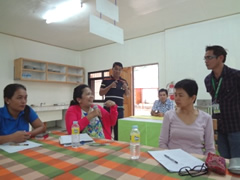 At BNATS (Feb. 5)
At BNATS (Feb. 5)
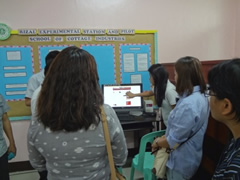 At RESPSCI (Feb. 11)
At RESPSCI (Feb. 11)
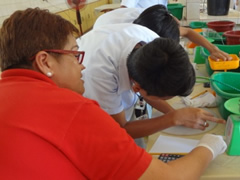 At BSF (Feb. 12)
At BSF (Feb. 12)
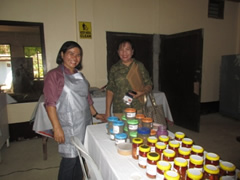 At ICNSF (Feb.19)
At ICNSF (Feb.19)
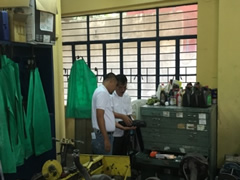 At DARSSTHS (Feb.29)
At DARSSTHS (Feb.29)
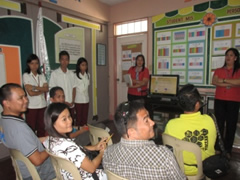 At SPRCNHS (Feb.29)
At SPRCNHS (Feb.29)
- About JICA
- News & Features
- Countries & Regions
- Our Work
- Thematic Issues
- Types of Assistance
- Partnerships with Other Development Partners
- Climate Change / Environmental and Social Considerations
- Evaluations
- Compliance and Anti-corruption
- Science and Technology Cooperation on Global Issues
- Research
- JICA Development Studies Program / JICA Chair
- Support for the Acceptance of Foreign HRs / Multicultural and Inclusive Community
- Publications
- Investor Relations
